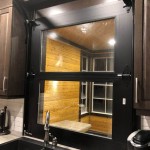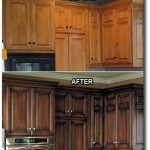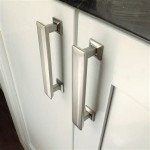Mobile Home Kitchen Sink Faucet: A Comprehensive Guide
Selecting the right kitchen faucet for a mobile home requires careful consideration due to space constraints and specific plumbing requirements. While aesthetics play a role, functionality, durability, and proper installation are paramount for a long-lasting and efficient solution. This article delves into the various factors to consider when choosing a mobile home kitchen sink faucet, including types, features, installation tips, and maintenance strategies.
Understanding Mobile Home Plumbing Systems
Mobile home plumbing systems differ significantly from those in standard residential houses. Primarily, mobile homes use PEX (cross-linked polyethylene) piping instead of copper or PVC. This flexible piping is more resistant to freezing and allows for easier routing within the compact spaces of a mobile home. Furthermore, mobile home plumbing connections may use different fittings and sizes, requiring careful adaptation when installing new fixtures.
It is crucial to identify the existing plumbing connections before purchasing a new faucet. Determine the size and type of the supply lines – typically ½" or 3/8" – and whether they utilize compression fittings or threaded connections. This information ensures compatibility and avoids the need for extensive modifications during installation.
Water pressure is another factor to consider. Mobile homes often have lower water pressure than standard homes. Select faucets designed to function efficiently at lower pressure levels to avoid weak water flow. Faucets with aerators can help compensate for low water pressure by mixing air into the water stream, providing a more forceful spray.
Types of Kitchen Sink Faucets Suitable for Mobile Homes
A variety of kitchen faucet types are available, but some are better suited for mobile home environments than others. Choosing the right type depends on the sink configuration, space limitations, and desired functionality.
Single-Handle Faucets: These faucets offer ease of use and precise temperature control with a single lever. They are a popular choice for mobile homes due to their compact design. Single-handle faucets typically require a single hole in the sink, simplifying installation. Look for models with ceramic disc cartridges for durability and leak prevention.
Two-Handle Faucets: Featuring separate hot and cold water handles, two-handle faucets offer a traditional aesthetic. They often require three holes in the sink for installation, which may necessitate modifications if the existing sink only has one hole. While offering precise temperature control, they can be less convenient than single-handle faucets for quick adjustments.
Pull-Out/Pull-Down Faucets: These faucets incorporate a retractable sprayer head connected to a flexible hose. The sprayer allows for convenient rinsing and cleaning of the sink. Pull-out faucets have a shorter hose and sprayer head that pulls out horizontally, while pull-down faucets have a longer hose and a sprayer head that pulls down vertically. Consider the available space above and around the sink when choosing between these two options.
Wall-Mounted Faucets: Wall-mounted faucets are installed directly onto the wall behind the sink, freeing up countertop space. They are a good option for mobile homes with limited counter space or unique sink configurations. However, installation may require professional plumbing work to ensure proper connections and support.
Bar/Prep Faucets: Smaller than standard kitchen faucets, bar/prep faucets are suitable for compact sinks or secondary sinks in a mobile home kitchen. They offer a streamlined design and efficient water flow.
Key Features to Look for in a Mobile Home Kitchen Sink Faucet
Beyond the type of faucet, several key features contribute to its performance and longevity.
Material: The material of the faucet significantly impacts its durability and resistance to corrosion. Brass is a common choice due to its strength and resistance to rust. However, ensure the faucet is made of lead-free brass to comply with safety regulations. Stainless steel is another durable option that is resistant to corrosion and easy to clean. Plastic faucets are less expensive but may not be as durable as brass or stainless steel.
Finish: The finish of the faucet not only affects its appearance but also its resistance to scratches and stains. Popular finishes include chrome, brushed nickel, oil-rubbed bronze, and matte black. Chrome is a classic choice that is easy to clean, while brushed nickel offers a more subtle and modern look. Consider the overall décor of the kitchen when selecting a finish.
Spout Height and Reach: The spout height and reach determine the faucet's clearance and accessibility. Choose a spout height that allows for easy filling of pots and pans. The spout reach should extend far enough into the sink to prevent splashing and ensure the water stream is directed towards the center of the basin.
Sprayer Functionality: For pull-out/pull-down faucets, consider the sprayer functionality. Look for models with multiple spray patterns, such as a stream for filling pots and a spray for rinsing dishes. A pause button can also be useful for temporarily stopping the water flow.
Water Efficiency: Opt for faucets with a low flow rate, typically 1.5 gallons per minute (GPM) or less, to conserve water. Look for WaterSense-certified faucets, which meet EPA standards for water efficiency and performance.
Ceramic Disc Cartridge: Faucets with ceramic disc cartridges are more durable and less prone to leaks than those with compression or ball valves. Ceramic disc cartridges provide smooth and precise water flow control.
Installation Hardware: Check that the faucet includes all necessary installation hardware, such as supply lines, mounting hardware, and a drain assembly. If the existing supply lines are not compatible with the new faucet, purchase appropriate adapters or replacement lines.
Installation Considerations for Mobile Home Kitchen Sink Faucets
Installing a kitchen sink faucet in a mobile home can be a straightforward process for experienced DIYers. However, it is essential to take precautions and follow proper procedures to avoid leaks and damage to the plumbing system. If unsure, it is always best to consult a qualified plumber.
Shut Off the Water Supply: Before starting the installation, turn off the water supply to the kitchen sink. Locate the shut-off valves under the sink or in the main water supply line to the mobile home. Test the faucet to ensure the water is completely shut off.
Remove the Old Faucet: Disconnect the supply lines from the old faucet. Have a bucket and towel handy to catch any remaining water. Use a basin wrench or adjustable wrench to loosen and remove the mounting nuts that secure the old faucet to the sink. Carefully lift the old faucet out of the sink.
Clean the Sink Surface: Clean the sink surface around the faucet holes to remove any dirt, grime, or old sealant. Use a putty knife or scraper to remove any residue. Dry the surface thoroughly.
Install the New Faucet: Follow the manufacturer's instructions to install the new faucet. Apply plumber's putty or silicone sealant to the base of the faucet to create a watertight seal. Insert the faucet into the sink holes and secure it with the mounting hardware. Tighten the nuts firmly but avoid over-tightening, which can damage the sink.
Connect the Supply Lines: Connect the supply lines from the faucet to the shut-off valves. Use Teflon tape on the threads of the connections to ensure a watertight seal. Tighten the connections with a wrench, being careful not to over-tighten.
Install the Drain Assembly: If installing a new drain assembly, follow the manufacturer's instructions. Apply plumber's putty or silicone sealant to the drain flange before inserting it into the sink. Tighten the drain nut and connect the drainpipe.
Turn on the Water Supply: Slowly turn on the water supply and check for leaks around the faucet, supply lines, and drain assembly. Tighten any connections that are leaking. Run the water for a few minutes to flush out any debris from the plumbing system.
Test the Faucet: Test the faucet to ensure it is functioning properly. Check the water flow, temperature control, and sprayer functionality. Adjust the faucet as needed to ensure optimal performance.
Maintenance and Troubleshooting for Mobile Home Kitchen Sink Faucets
Regular maintenance can extend the life of a kitchen sink faucet and prevent costly repairs. Following a few simple steps can keep the faucet functioning smoothly.
Clean Regularly: Clean the faucet regularly with a soft cloth and mild soap and water. Avoid using abrasive cleaners or scouring pads, which can damage the finish. Wipe the faucet dry after each use to prevent water spots.
Check for Leaks: Periodically check for leaks around the faucet, supply lines, and drain assembly. Tighten any connections that are leaking. If the leaks persist, consider replacing the O-rings or cartridges.
Clean the Aerator: The aerator can become clogged with mineral deposits or debris, reducing water flow. To clean the aerator, unscrew it from the faucet spout and soak it in vinegar or a descaling solution. Use a small brush to remove any stubborn deposits. Rinse the aerator thoroughly and reattach it to the faucet.
Replace Worn Parts: Over time, the faucet's internal components, such as cartridges, O-rings, and washers, can wear out and cause leaks or reduced performance. Replace these parts as needed to maintain the faucet's functionality. Refer to the manufacturer's instructions for replacement procedures.
Address Low Water Pressure: If experiencing low water pressure, check the water supply lines for kinks or obstructions. Ensure the shut-off valves are fully open. If the problem persists, consider installing a water pressure booster.
Winterize the Faucet: In cold climates, protect the faucet from freezing by insulating the pipes and faucet body. If the mobile home is not in use during the winter, drain the water from the plumbing system to prevent freezing and damage.
By carefully considering the specific plumbing requirements of a mobile home and following these guidelines, homeowners can select and install a kitchen sink faucet that provides years of reliable service.

Brushed Nickel Rv Mobile Home Pullout Faucet With Single Lever Sprayhead Stream Or Spray Option 3 1 Hole Sink

Rv Mobile Home Motor Vehicle Kitchen Sink Faucet Stainless Steel Finish Plastic Ebay

Chrome Rv Mobile Home Kitchen Faucet With Gooseneck Spout Sprayer

Brushed Nickel Rv Mobile Home Metal Kitchen Faucet Sink With Single Lever Pull Down Sprayer 3 Or 1 Hole

Rv Mobile Home Kitchen Faucet Dual Handles Hot Cold Basin Sink Mixer Tap New Ebay

Mobile Home Standard Kitchen Faucet For Manufactured Housing

Rv Mobile Kitchen Faucet For Campers Double Handle Level Only Fit 2 Mounting Holes High Arc Swivel Hot Cold Home Plastic Chrome

Ultra Faucets Rv Mobile Home Trailer Kitchen Sink Faucet Stainless Steel Greydock Com
/product/50/3559751/1.jpg?strip=all)
Generic Rv Mobile Home Double Basin Faucet For Kitchen Best Price Online Jumia Kenya

Ultra Faucets Uf08305cf Rv Mobile Home Kitchen Sink Faucet Stainless Finish Greydock Com








